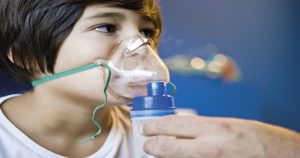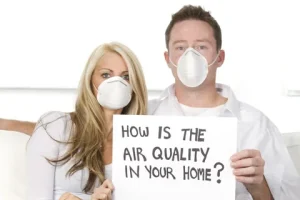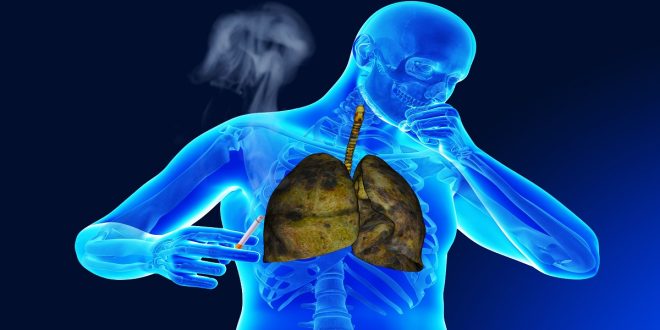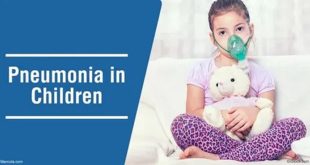Air quality significantly impacts the health of the general population, especially breathing. Since the lungs form the main point of contact with the outside environment as well as our internal systems and organs, the health of the air we breathe plays an integral part in determining the health of our respiratory results. In the past couple of years, air pollution has been an issue for public health across the globe. This article examines the relationship between air quality and respiratory health. It will explore the different pollutants that impact lung function, the long-term and short-term adverse health effects, and ways to minimize the risks.
Understanding Air Quality: Key Pollutants and Their Sources
Air pollution comprises an intricate mix of particulate matter (PM), gases, and biological material. The most frequent and dangerous pollutants are particles of matter (PM2.5 and PM10) such as Ozone (O3) as well as NO2 (NO2), sulfur dioxide (SO2) as well as carbon monoxide (CO) as well as volatile organic compounds (VOCs). Each one is derived from various sources and has distinct effects on respiratory health.

Particulate Matter (PM2.5 and PM10)
Particulate matter is the term used to describe microscopic particles floating in air. PM10 refers to particles with a diameter of at least 10 micrometers, and PM2.5 refers to particles with dimensions of 2.5 micrometer’s or smaller. They can consist of various substances, such as dust and soot, as well as metals and organic chemical compounds. PM2.5 is especially dangerous as it can get into the lungs and be absorbed into the bloodstream, leading to inflammation and aggravation of respiratory ailments.
Ozone (O3)
Ozone on the ground is an essential element of smog. It’s produced when sunlight reacts with pollutants such as nitrogen oxides (NOx) and volatile organic compounds (VOCs). In contrast to stratospheric Ozone, which shields us from UV radiation, ground-level Ozone threatens respiratory health, leading to discomfort and irritation of airways.
Nitrogen Dioxide (NO2)
NO2 results from combustion processes in power plants, vehicles, and the environment. It’s a significant respiratory irritant that may result in inflammation and irritation of the airways and can contribute to the development of respiratory illnesses such as asthma.
Sulfur Dioxide (SO2)
SO2 is primarily created by burning fossil fuels, like oil and coal, which are used in power factories and industrial facilities. It may cause respiratory issues such as coughing, breathlessness, and increased mucus production, especially in people with preexisting respiratory problems.
Carbon Monoxide (CO)
CO is a colorless and smell less gas produced by incomplete combustion of carbon-rich fuels. It binds to hemoglobin within the bloodstream, reducing how much oxygen is transferred to the body’s tissues. Although CO poisoning can be a severe and frequently acute ailment, long-term inhalation of low CO levels may be detrimental to the health of the respiratory system.
Volatile Organic Compounds (VOCs)
VOCs are organic chemicals that can quickly disappear into the air. They come from various sources, such as vehicle emissions, manufacturing processes, and household items. A large number of VOCs harm the respiratory system, causing the formation of ground-level Ozone and directly irritating airways.
Short-Term Effects of Poor Air Quality on Respiratory Health
The short-term consequences of exposure to poor-quality air can be severe and immediate, particularly for those who suffer from respiratory disorders such as asthma, chronic obstructive pulmonary disease (COPD), and bronchitis. Even healthy people may experience unpleasant respiratory symptoms after exposure to high levels of pollution in the air.
Respiratory Irritation
Exposure to contaminants such as NO2, Ozone, and particulate matter may cause an immediate irritation to your respiratory tract. The symptoms can include throat irritation, coughing, breath shortness and a sensation of chest tightness. The symptoms can be especially noticeable during exercise when deep and faster breathing can increase the amount of pollution absorbed.
Exacerbation of Asthma
It is a long-lasting respiratory disease that causes the inflammation of the airways. Poor air quality can cause asthma attacks, leading to a rise in the use of medicines or hospitalization and, in extreme instances, respiratory failure. Ozone and particulate matter have been proven to trigger asthma symptoms by producing inflammation in the airways and hyperreactivity.
Increased Respiratory Infections
Exposure to air pollution can affect immunity to respiratory infections and make it more vulnerable to infections. Particulate matter pollution can transport pathogens into the lungs, which increases the chance of developing respiratory illnesses such as bronchitis or pneumonia. The elderly, children and those with weak immune systems are more susceptible to the abovementioned diseases.
Decreased Lung Function
In the short term, exposure to extreme levels of pollution in the air can cause a temporary decline in the lung’s function. This is typically measured through a boost in the forceful expiratory volume (FEV1), which measures the quantity of air that a person can exhale forcefully in a second. A decline in lung function could cause shorter breaths and decreased physical strength.
Hospital Admissions and Mortality
When there is a high level of air pollution, there’s typically a rise in hospitalizations due to respiratory illnesses. In extreme instances, poor air quality could cause premature death, especially among vulnerable populations such as the elderly or people with previous cardiovascular or respiratory issues.
Long-Term Effects of Poor Air Quality on Respiratory Health
Although the short-term consequences of poor air quality are alarming, the long-term implications are much more concerning. Long-term exposure to air pollution could cause irreparable damage to the respiratory system and contribute to the development and progression of severe health issues.
Chronic Obstructive Pulmonary Disease (COPD)
COPD is a set of lung diseases that are progressive and include emphysema and chronic bronchitis that can cause breathing difficulties and airflow obstruction. Long-term exposure to air pollutants, especially NO2 and particulate matter, is a significant risk factor in developing the development of COPD. Air pollution is a major cause of loss of lung function as time passes, resulting in worsening symptoms and a boost in mortality.
Lung Cancer
The air pollution we breathe is an acknowledged risk cause for lung cancer, mainly particulate matter, and PM2.5 is a crucial factor. The International Agency for Research on Cancer (IARC) has classified air pollution from outdoor sources as a group 1 carcinogen, which means it has been proven to cause cancer in humans. Exposure to long-term pollutant-laden air can cause DNA destruction in lung cells, which increases the likelihood of malignant changes.
Reduced Lung Development in Children
Children are particularly susceptible to the impacts of air pollution since their lungs are still growing. Long-term exposure to poor-quality air could decrease lung function and growth, which may not be fully restored even if the exposure is lessened later in life. Children who live in areas with excessive concentrations of pollutants are at a higher risk of developing respiratory illnesses like asthma, bronchitis or apnea and are at a greater likelihood of experiencing a decrease in lung function as they grow older.
Worsening of Asthma and Allergies
Exposure to long-term pollutant-laden air can cause chronic asthmatic inflammation, causing worsening asthma and allergic disorders. Pollutants such as Ozone and particulate matter raise your sensitivity to airways to allergens, which can lead to more frequent and severe allergic reactions. In time, this may cause chronic respiratory problems and a decline in lung function.
Cardiovascular and Systemic Effects
Although this article focuses on the respiratory system’s health, it is vital to remember that the long-term consequences of air pollution go beyond the lungs. Long-term exposure to air pollution can cause chronic irritation, oxidative stress and endothelial degeneration, which contributes to the development of cardiovascular illnesses like hypertension, heart attacks and strokes. The respiratory system functions as the primary defense against air pollution. However, the damage may extend across the body, impacting general health.
Premature Aging of the Lungs
Exposure to long-term pollutants in the air can speed up the natural process of ageing the lungs. This can result in an impairment in lung function at a later than anticipated, increasing the risk of developing chronic respiratory diseases and decreasing the quality of life for older people. The cumulative effects of years of exposure to pollutants could significantly strain your respiratory system.
Vulnerable Populations: Who Is Most at Risk?
Although air pollution is a problem for all of us, certain groups are more susceptible to its adverse impacts. Knowing these vulnerable populations is essential for identifying the desirable ways to protect the most vulnerable threat.
Children
As mentioned earlier, children’s lungs are developing, making them more vulnerable to pollution effects on their lungs. Children also spend more time outside and participate in physical activities, which boost their breathing rates and can result in higher exposure to pollution. The long-term effects of childhood exposure to pollutants can include decreased lung growth, an increased chance of developing respiratory diseases and diminished cognitive development.

Elderly Individuals
The elderly are more vulnerable to the adverse effects of air pollution as a result of the decline in lung function with age, along with the presence of long-term health issues like COPD, heart disease, COPD, and diabetes. Air pollution can worsen these ailments, resulting in higher hospital admissions, lower quality of life and higher mortality rates.
People with Preexisting Respiratory Conditions
Patients with asthma, COPD, asthma, or other respiratory issues are especially susceptible to air pollution. Exposure to pollutants can cause symptoms, which can result in exacerbations and a decrease in the function of your lungs. Patients with this condition typically require more medical attention and have a less pleasant quality of life due to their increased sensitivity to low air quality.
Low-Income Communities
Residents of lower-income communities often experience more air pollution due to their proximity to industrial sites, busy roads and poor housing conditions. In addition, these communities could lack access to health services and resources that can mitigate the adverse effects of air pollution, leading to health disparities.
Outdoor Workers
Individuals who work outdoors, like farmers, construction workers, and traffic police, have a greater chance of exposure to air pollution. Exposure to long-term pollutants such as particulate matter, Ozone and diesel exhaust could cause chronic respiratory problems and other health concerns.
Global Trends in Air Quality and Respiratory Health
Air pollution is a worldwide issue, and there are significant differences in air quality and respiratory health outcomes across regions. Knowing these trends is crucial in developing appropriate policies and interventions.

Developed vs. Developing Countries
The developed and the less developed. Developing countries The air quality tends to deteriorate more in developing countries experiencing rapid industrialization and urbanization, and dependence on fossil fuels results in high amounts of pollutants. In these areas, respiratory health outcomes are generally less good, and there are more excellent rates of asthma, COPD, and other respiratory ailments. However, countries with developed economies have made tremendous progress in improving air quality through regulations and technological advances; however, respiratory health concerns persist, especially in areas with the highest traffic density.
Urban vs. Rural Areas
Urban regions are more prone to air pollution because of industrial and traffic activities and a higher population density. People living in urban areas tend to be affected by respiratory issues due to air pollutants. Rural areas aren’t immune to the problem since the activities of farmers, wildfires, and long-range transportation of pollutants may cause poor air quality.
Climate change
Climate change is expected to intensify air pollution by intensifying the intensity and frequency of wildfires. It will also alter weather patterns that affect the dispersion and distribution of pollutants and increase the production of ground-level Ozone. These changes are likely to be significant for the health of the respiratory system, especially for those at risk.
Pandemic and Air Quality
The COVID-19 pandemic caused temporary decreases in air pollution due to the lockdowns and decreased economic activity. However, the longer-term impact of the disease on the quality of air as well as respiratory health is being investigated. The outbreak also underscored the importance of having clean air since poor air quality has been linked with more excellent rates of transmission of COVID-19 and death.
Mitigation Strategies: Improving Air Quality for Better Respiratory Health
The impact of air quality on respiratory system health requires a multifaceted approach involving individual actions, community-based initiatives, and policies.
Individual actions
Reducing Exposure: Individuals can take steps to lessen their exposure to pollution from the air by avoiding indoors on pollution-prone daytime, together with air purifiers, and avoiding outdoor activities along busy roads.
Promoting Healthy Lifestyles: A healthy diet, regular exercise, and abstaining from smoking cigarettes can help the respiratory system and lessen the effect of air pollutants on lung health.
Using Public Transportation: Reducing reliance on personal automobiles through public transport, carpooling, or cycling can minimize air pollution and raise the overall health of a community.
Community Initiatives
Urban Planning: Designing towns with green areas, biking paths, and pedestrian-friendly infrastructure can help reduce pollution and improve the health of your respiratory system.
Air Quality Monitoring: Community members can profit from the local programs to monitor air quality, which imparts live information to residents and helps them find pollution hotspots.
Public Awareness Campaigns: Informing the general public about the health hazards of air pollution and ways to limit exposure could result in healthier communities.
Policy Interventions
Regulating Emissions: Governments can implement and enforce stricter emission standards for industrial processes, vehicles and power plants to decrease air pollution.
Promoting Clean Energy: Transitioning to renewable energy sources such as solar, wind, and hydroelectric power could reduce dependence on fossil fuels and air pollution.
Supporting Research: Research continues on the health impacts of air pollution, and developing innovative technologies to reduce and monitor pollution is essential to improve the population’s health.
Conclusion
Air quality significantly influences respiratory health and affects people of all age groups and from all backgrounds. The long- and short-term impacts of exposure to air pollution can cause numerous respiratory illnesses, including asthma, COPD as well as lung cancer and diminished functioning of the lungs in young children. People with a high risk of vulnerability, such as children, older people, older adults, and those who have previous health problems, are at greater risk.
Addressing the effects of air quality on respiratory patients’ health requires a concerted effort at every level, from individual actions to global policy initiatives. By understanding the causes and consequences of air pollution and adopting effective strategies to minimize the risk of exposure, we will safeguard the health of respiratory patients and increase the standard of living for all people worldwide.
FAQs
What is the primary source of particulate matter (PM) in the air?
Particulate matter primarily comes from vehicle emissions, industrial processes, and construction activities. PM can also be generated from natural sources such as wildfires and dust storms.
How does ground-level ozone affect respiratory health?
Ground-level ozone irritates the respiratory tract, leading to coughing, throat irritation, and worsened asthma symptoms. It can also reduce lung function and increase susceptibility to respiratory infections.
What are the short-term effects of poor air quality on respiratory health?
Short-term effects include coughing, throat irritation, shortness of breath, exacerbation of asthma, and increased risk of respiratory infections.
Who is most vulnerable to the effects of air pollution?
Children, the elderly, individuals with preexisting respiratory conditions, and those living in low-income communities are most vulnerable to the effects of air pollution.
 aim specialty health Discover Expert Insights, Empower Your Wellness With Aim Specialty Health Blogs.
aim specialty health Discover Expert Insights, Empower Your Wellness With Aim Specialty Health Blogs.




